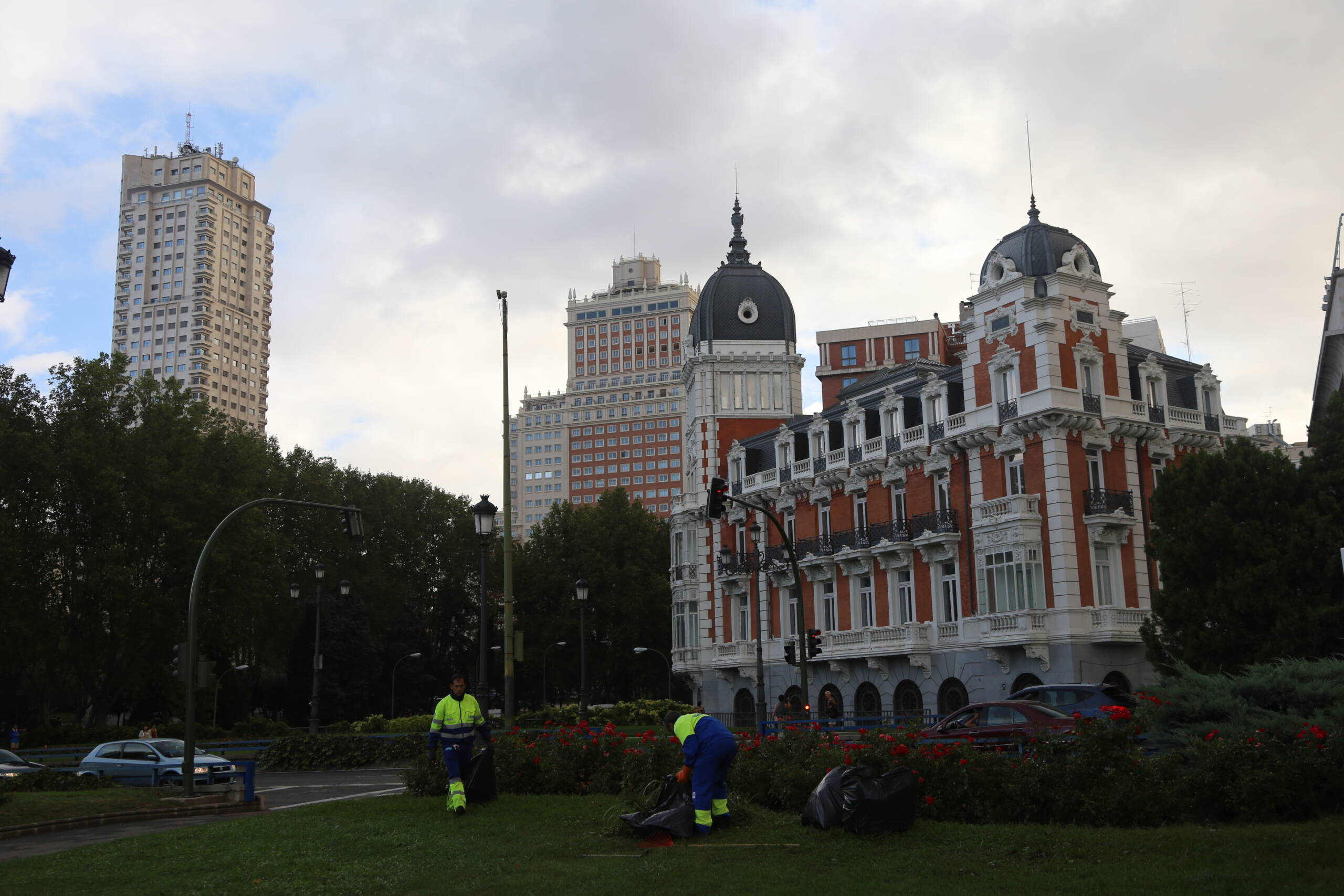This corner of Madrid feels like a collision of centuries. To your left, the Torre de Madrid rises blunt and pale, a mid-20th century ambition that once claimed the title of tallest concrete building in the world. Beside it, the Edificio España stands in its stepped red-and-white geometry, a skyscraper that looks as if it wandered out of New York in the 1950s and decided to stay put in Spain. And then, just in front, the elegant brick-and-white palacete with its mansard roofs and domed turrets—the Casa Gallardo—stubbornly insists on another rhythm altogether, its ornate windows and wrought-iron balconies whispering Belle Époque airs into the mix.

Stand in this spot long enough and the scene rearranges itself, depending on how you tilt your gaze. Look upward, and the towers frame the Madrid skyline with their blunt verticals, a reminder of the city’s attempt at modernity and business swagger. Drop your eyes to street level, and you see the garden workers in neon jackets tending to flowerbeds, plastic bags of cuttings at their feet. Their presence grounds the whole spectacle, puncturing any illusion of grandeur with the simple fact that someone has to keep the roses in bloom beneath all that stone and concrete.
The irony is that this area—Plaza de España—was once envisioned as Madrid’s window to the future, a square framed by skyscrapers, projecting a modern capital’s confidence. And yet, standing here, you feel Madrid’s refusal to ever become just one thing. The city is perfectly comfortable stacking Belle Époque flourishes against Franco-era modernism, letting them coexist without explanation. That’s Madrid in essence: a place where elegance and brutalism share the same horizon line, where daily life goes on below in a rhythm of traffic lights, garden work, and passing conversations, oblivious to the ideological battles carved into the buildings above.
The temptation is to photograph only the facades, to reduce the view into a postcard of architecture. But the truer memory of this moment isn’t in the stone or glass; it’s in the incongruity of the scene. The domes and turrets pretending they still rule the skyline, the boxy towers behind them claiming dominance, and the gardeners in front reminding you that every city, no matter how layered, survives on the labor of hands that rarely make it into the photo. Madrid’s story is written as much in those bags of cut grass as it is in the ornate balconies hanging above.
Leave a Reply